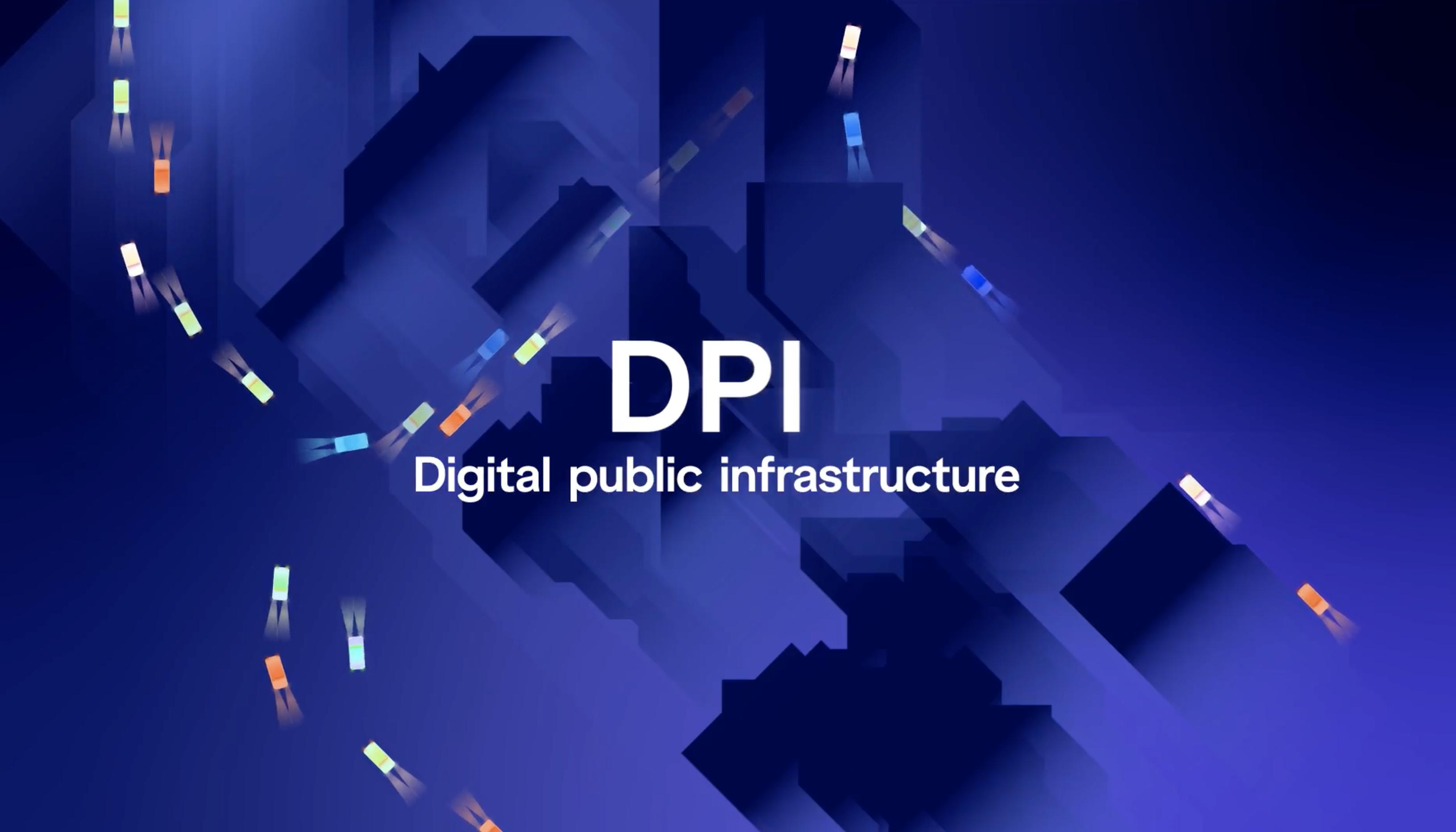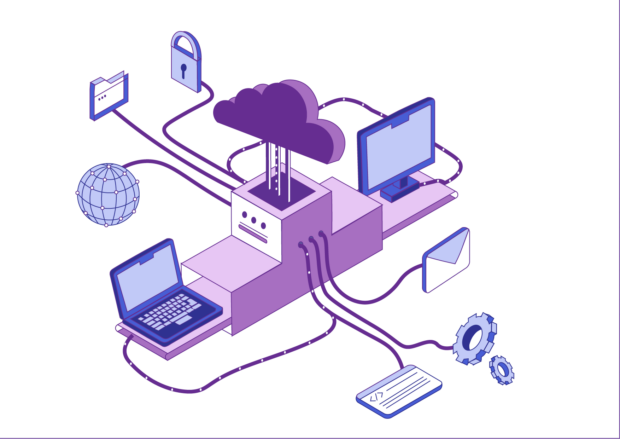As more people globally connect to the internet, governments, communities, and private sector organizations have a tremendous opportunity to harness the power of digital to improve the quality of life for all.
The potential for positive impact is vast and game-changing — expanding access to education and healthcare, connecting people to economic opportunity, and advancing gender equality. To turn this vision into reality, we must establish the right digital foundation that facilitates the effective delivery of vital public and private sector services. This foundation should foster trust, ensure everyone can use these services, and serve the best interests of all.
Enter digital public infrastructure (or DPI as it is often referred to).
DPI, a new approach to the design and deployment of foundational digital systems, is showing impressive early results, enabling countries to leapfrog their development efforts by decades with a more cost-effective, faster, and efficient way to reap the benefits of digitalization at scale.
What are the characteristics of the digital public infrastructure approach?
When done right, DPI can foster a well-functioning, interconnected digital society and economy. To deliver impact beyond the sum of its parts, the DPI approach must be holistic, designed to:
- Maximize public value creation: The digital systems comprising DPI are governed, first and foremost, with the public interest in mind. Rather than enabling the consolidation of digital services and resultant data to a few actors, DPI prioritizes equitable access, population-scale inclusion, and encourages competitive markets.
- Follow clear design principles: The digital systems comprising DPI are modular, interoperable, extensible, and—critically—designed using open tech standards. This enables public and private entities to connect to these systems easily and use them to scale service delivery, as well as ensures flexibility to adapt to changing needs, preferences, and emerging technologies. In turn, DPI becomes the rails for public and private sector innovation.
- Prioritize the rights and aspirations of all people. The digital systems comprising DPI are architected to minimize personal data collection, and, importantly, to give people agency over how their data is used and the means to benefit from participation in the data economy. This implies ensuring meaningful consent and effective redressal mechanisms are “baked in” to the technology design and enabling policy environment.

What foundational layers make up digital public infrastructure?
There are several often-cited foundational layers, including digital ID, digital payments, data exchange, and consent. On their own, each of these systems can play an important role. When implemented in adherence to the above standards, the foundational digital layers can build trust and inclusion – and promote positive digital transformation.
- Data exchange: This layer enables data sharing across a wide range of applications and systems to streamline access to services. With data exchanges, individuals don’t have to reenter their information multiple times when, for example, applying for a loan or accessing government services. Consider Estonia’s implementation of X-ROAD. This unified and secure data exchange platform supports approximately 3,000 e-services nationwide. Data exchange systems do this by providing a foundational architecture for how data is formatted, authenticated, logged, validated, protected, and made available to various applications and other systems.
- Digital ID: This layer provides individuals with a unique digital identifier that can be authenticated so people can access social services, open bank accounts, get health insurance, and more. With a DPI approach, this identifier enables data exchange by ensuring that individuals’ records can be responsibly matched across different systems, whether health, social assistance, or education.
- Digital payments: This layer enables individuals to pay bills, make purchases, and send and receive money online through any digital app or service provider, such as a utility company or government agency. With a DPI approach, digital app and service providers can plug into an open, interoperable instant payment system that is also tied to a unique digital ID. Thus, the providers do not have to create bespoke connections to every card, bank network, and digital wallet. They can also use the data exchange system to securely access necessary data for customer due diligence and lower the cost of providing financial services to low-income customers. Such payment systems can accelerate the deployment of, and access to, new financial services across communities.
- Consent: This layer helps ensure the deployment of a data protection architecture and related technologies that give individuals greater control over how their personal data is used. As public and private organizations build the foundational layers for digital IDs, payments, and data exchange, developing a system for consent is necessary to support individuals’ right to privacy and desire for agency over their personal data. With consent, individuals can approve or reject data requests, revoke access to data, and share data at a granular level. India’s Data Empowerment and Protection Architecture (DEPA), for instance, is an ambitious attempt to re-architect data flows from the current organization-centric model to an individual-centric model. The Account Aggregator (AA) framework, introduced in India as the first implementations of DEPA, gives individuals more control over and insight into how their personal financial data is used.
When using a DPI approach, other core systems can easily be integrated, such as geospatial data and address registries. And, as communities and countries add these additional layers, more opportunities become possible.
Why is the digital public infrastructure approach beneficial?
Because DPI emphasizes interoperability, flexibility, and reusability, it can provide enormous public benefit, enabling both improved public service delivery and private sector innovation. This approach, at its best, promotes a number of principles critical to positive digital transformation, including participation, agency, choice, and trust.
When systems are designed using a DPI approach, they can power a wide range of services — from enabling remote workers to easily open a bank account or apply for credit online to helping cities optimize traffic flows and reduce traffic congestion so they can decrease carbon emissions.
Here are just a few examples of what this can mean for people, markets, and society.
- Increased financial inclusion. DPI can enable the private and public sectors to more quickly and efficiently deliver solutions to expand banking, credit, and payment services to individuals who have traditionally been left behind. India’s DPI, for example, includes digital IDs (called Aadhaar) and instant payments (known as India’s United Payments Interface). Together, Aadhaar and UPI have helped India to achieve over 80% financial inclusion in 6 years — compared to the 46 years it would have taken without these foundations.
- Expand economic growth. DPI can enable private sector organizations to innovate faster and bring new services to market for communities, which in turn stimulates the economy and drives competition. A study by the United Nations Development Program (UNDP) and Dalberg revealed that by 2030, DPI could accelerate low- and middle-income countries’ combined GDP to $19.2 trillion, achieving this goal two to three years faster than otherwise possible.
- Greater gender equity. When developed with an understanding of the communities it serves, DPI can unlock myriad services and opportunities that help improve almost every aspect of life for women. In Pakistan, DPI allows for instant payments, enabling women in rural communities for the first time to access financial services, build credit, and harness the power of the purse, laying the groundwork for social progress.
- Improved climate action. DPI enables the crucial data sharing needed to drive solutions that mitigate climate change, enable communities to proactively plan for adverse weather events, and allow for faster climate response when disaster occurs. For example, by facilitating the sharing of weather and climate data, DPI can enable governments to develop early warning systems and emergency response plans that help protect individuals from the impacts of extreme weather. In Mozambique, such work has helped reduce the number of people affected by cyclone-induced flooding by 82% within three years.
- Expanded economic growth and innovation. DPI can enable private sector organizations to innovate faster and bring wholly new services to market, thereby creating jobs, stimulating the economy, and driving competition. Research by the Omidyar Network estimates that the implementation of Open Data policies in government could add between $700 billion and $950 billion in annual income within the G20.
Who builds and maintains the layers of digital public infrastructure?
Any government agency, private sector company, or foundation may develop the foundational layers for DPI, but typically we find a mix of organizations working in partnership to do so. Sometimes these efforts are government-led, as in the case of India and Estonia. In others, it might be led by private sector organizations.
Moreover, it’s not unusual to find different agencies or companies “owning” different layers of their country’s DPI. In India, five agencies are responsible for the various components of its DPI, called India Stack. Regardless, the government is responsible for setting rules, policies, and norms that enable and secure DPI.
Ultimately, when it comes to designing DPI, the key is not who takes the lead – it is using interoperable and modular designs to maximize inclusion and competition for the public good.
What safeguards must be considered?
As with any technology, there is potential for the foundational layers of DPI to be misused. Data systems can create a “honey pot” of information that bad actors can target to steal identities and commit fraud. Governments intent on repressing or excluding groups could use digital IDs, payment systems, and data exchanges to accelerate illegal surveillance or targeted persecution.
A DPI approach is one that safeguards against such abuses. By creating an interoperable system that connects each layer through secure data exchange, this approach helps to prevent the need to create a “honey pot” or allowing any one actor to gain control over any one system.
That said, even with a DPI approach, it is imperative to build checks and balances that provide accountability and help ensure it continues to serve the public good. Good DPI must be governed through a people-centered approach, one that includes robust safeguards implemented and maintained by public institutions, civil society organizations, and societal norms. For example:
- Technical safeguards, such as employing decentralized data storage to make it more difficult for non-state actors, rogue government actors, or authoritarian regimes to gain access to or steal personal data.
- Policies and regulations, including laws protecting data and implementing cybersecurity standards. As India’s government developed its digital identity system, India’s Supreme Court made several rulings to protect individuals’ privacy rights.
- Community outreach, participation, and agency to actively combat any in-built or resultant exclusion or marginalization. Governments and policymakers must work closely with important bodies, such as civil society groups, throughout the DPI process.
- Oversight and accountability mechanisms, with robust, well-resourced institutions, such as data protection agencies or independent bodies, for enforcing the rules while also offering citizens responsive and effective redress.
With robust checks and balances in place across these four areas, DPI can help build a positive digital future.
How can I learn more?
The Digital Impact Alliance has numerous resources to help governments, communities, and private sector organizations get started.
Dive into our research and publications on DPI, including best practices, insights, recommendations, and case studies. For example:
- Our insights paper focusing on national integrated data exchange systems – and how they can promote shared prosperity.
- Our expert comment exploring the importance of metrics to effectively measure DPI’s impact on people and communities.
- Our recent piece explaining how robust safeguards can promote inclusive, trustworthy DPI.
You can also peruse our Digital Impact Exchange, which provides public and private organizations with a good starting point to explore the products, tools, and strategies they will need to build digital ID, payment and data exchange exchange systems.





